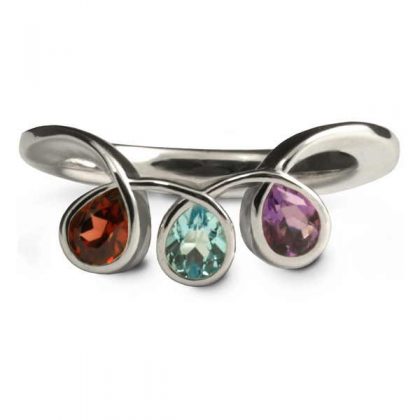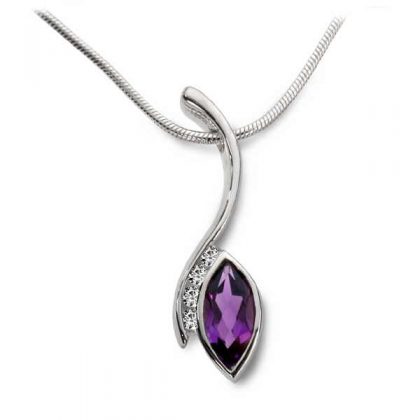Iolite
IOLITE
Hardness: 7 – 7.5
Birthstone: September
Anniversary: 21st 
Iolite is the gem variety of a mineral called Cordierite that is found in metamorphic rocks. It’s chiefly mined in India, Sri Lanka, Mozambique, Zimbabwe, and Brazil. It’s a kind of deep purple… or is it? Iolite has a remarkable property called pleochroism which means that the crystal structure passes light in different ways when viewed from different directions. This means that a cube of iolite would look violet blue, from one side, clear as water from the other, and a honey yellow from on top. Thin shims of iolite were, it’s said, used by the Vikings in order to look directly at the sun and determine their position more exactly. If this were true but they had accidentally cut the stone the wrong way we might have had more blind Vikings and rather less less raping and pillaging on the east coast of England.
![]() In reality the shims were used as polarising filters in order to determine the position of the sun on cloudy or overcast days. This works by determining the direction of polarization of the sky overhead. Light scattered by air molecules is polarized, and the direction of the polarization lies at right angles to the sun’s rays, even when the sun’s disk itself is obscured by dense fog or lies just below the horizon.
In reality the shims were used as polarising filters in order to determine the position of the sun on cloudy or overcast days. This works by determining the direction of polarization of the sky overhead. Light scattered by air molecules is polarized, and the direction of the polarization lies at right angles to the sun’s rays, even when the sun’s disk itself is obscured by dense fog or lies just below the horizon.
Since the advent of polarising sunglasses, our daily need to determine the direction of the sun is nicely taken care of, so of what use is iolite to us as a gem stone? Well, according to some people “Iolite helps natural psychic abilities to surface. It is helpful tool for the spiritual seeker. It also helps to balance feminine and masculine energies.”

Personally I have no truck with this kind of thinking. There seems to be a feeling that crystals must have magical properties because they are so old, as if they have been imbibing powers through their long eons underground as part of the Earth’s fabric. I can understand how this arises; there is something magical about the way in which a perfectly geometric, beautiful crystal can form spontaneously amidst a mess of amorphus rock but the magic lies in chemistry and the amazing principles of physics that underlay our entire Universe.

If you don’t want to have your feminine and masculine energies balanced, you can always just wear iolite because it’s pretty. As a gem stone iolite has to be cut from just the right angle in order to get the desired colour. It’s sometimes cut to display a bluish tinge and has been called a ‘water sapphire’ in the past, but it is mostly cut to present a deep purple colour. It’s a subtle rather than a vibrant colour but I use it extensively in my gold and silver jewellery as an alternative to the blue topaz, which some people find a little garish.
Iolite doesn’t photograph well so, when I photograph a piece, I tend to choose other stones for the image. Nonetheless, all the pieces below and many others in my range, offer iolite as an option.
![]() This iolite and diamond bangle was inspired by a similar bangle that I was commissioned to make in 18ct gold. The original ring that sparked the design in the first place is the Pear ring below. You can find a bigger image and more information on the bangle in the Rogue’s Gallery by clicking here
This iolite and diamond bangle was inspired by a similar bangle that I was commissioned to make in 18ct gold. The original ring that sparked the design in the first place is the Pear ring below. You can find a bigger image and more information on the bangle in the Rogue’s Gallery by clicking here
You can click the thumbnails below to see a selection of pieces that are set with iolite.






